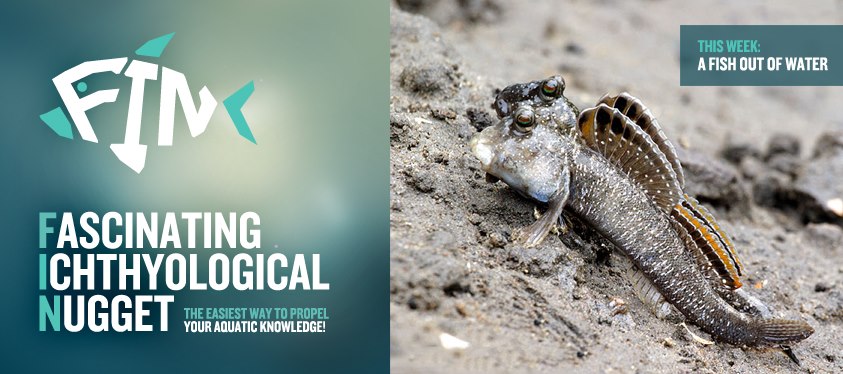Cookie Policy
We use cookies to help improve the experience you have on this site. You can find out more here.
We use cookies to help improve the experience you have on this site. You can find out more here.


Mudskippers are truly amazing marine gobies that have evolved to exploit a niche habitat with minimal competition. Their unique behaviour and cartoon-like characteristics just adds to their appeal.
Mudskippers are members of the subfamily Oxudercinae within the family Gobiidae ('Gobies'), and both carnivorous (Periophthalmus) and herbivorous (Boleophthalmus) forms occur. Undoubtably the most amazing 'feature' of these fish is that they are completely amphibious and can use their pectoral fins to walk on land. Being amphibious, they are uniquely adapted to intertidal habitats, unlike most fish that have to retreat with the tide by either sheltering in tidal pools or returning to the sea in order to survive. Mudskippers are surprisingly active when out of water, feeding and interacting with one another (e.g. to defend their territories). They are found in many tropical, subtropical and temperate regions, including the Indo-Pacific and the Atlantic coast of Africa.
Compared with fully aquatic gobies, these fish present a range of peculiar behavioural and physiological adaptations to an amphibious lifestyle. Their unique anatomical and behavioural adaptations allow Mudskippers to move effectively on land as well as in the water. As their name implies, these fish use their fins to move around in a series of skips and hops. They can also flip their muscular body to catapult themselves up to 2 feet (60 cm) into the air! Whilst out of the water they obviously require the ability to breathe, and do this through their skin, the lining of their mouth (the mucosa) and throat (the pharynx). However, this is only possible when the mudskipper is wet, limiting mudskippers to humid habitats and requiring that they keep themselves moist. This mode of breathing (similar to that employed by amphibians) is known as cutaneous air breathing. Another important adaptation that aids breathing while out of water are their enlarged gill chambers, where they retain a bubble of air. These large gill chambers close tightly when the fish is above water, keeping the gills moist, and allowing them to function. This effectively means that they hold their breath out of water in a similar way to humans when we're doing the opposite.
And finally, by digging deep burrows in soft ground, it allows the fish to thermoregulate (keep its body temperature within certain boundaries, even when the surrounding temperature is very different), avoid predation during the high tide when the larger fish return and these burrows are submerged, and also provides a safe haven for laying their eggs. Even when their burrows do become submerged, mudskippers maintain air pockets inside, which allows them to still breathe in conditions of very low oxygen concentrations! A truly remarkable fish!
They might not be as generous as the easter bunny, but rabbitfish are very giving when it comes to algae control. This One-spot fox face (Siganus unimaculatus) at Reefkeeper Rugby makes a great alternative to the more active tangs but will reach a size that necessitates a spacious aquarium. Every time I write about these fishes I wonder why the old common name of Badger fish isn’t more widely used, but then the native name of Spinefoot (thanks to their stinging venomous dorsal spines) is perhaps more deserved in areas where they’re caught as food fish.
https://www.fishkeeper.co.uk/fish/marine/miscellaneous-fish/one-spot-fox-face-
For delivery before Christmas, orders must be placed on or before 3pm on Wednesday 20th December. We cannot guarantee delivery of these orders pre-Christmas as we are reliant on our couriers, but will use our best endeavours to get orders placed on this date out to you before Christmas. For full details of our festive delivery and opening times click here
Please note: online orders placed after 3pm on Friday 22nd December will not be dispatched until the New Year. For full details of our festive delivery and opening times click here